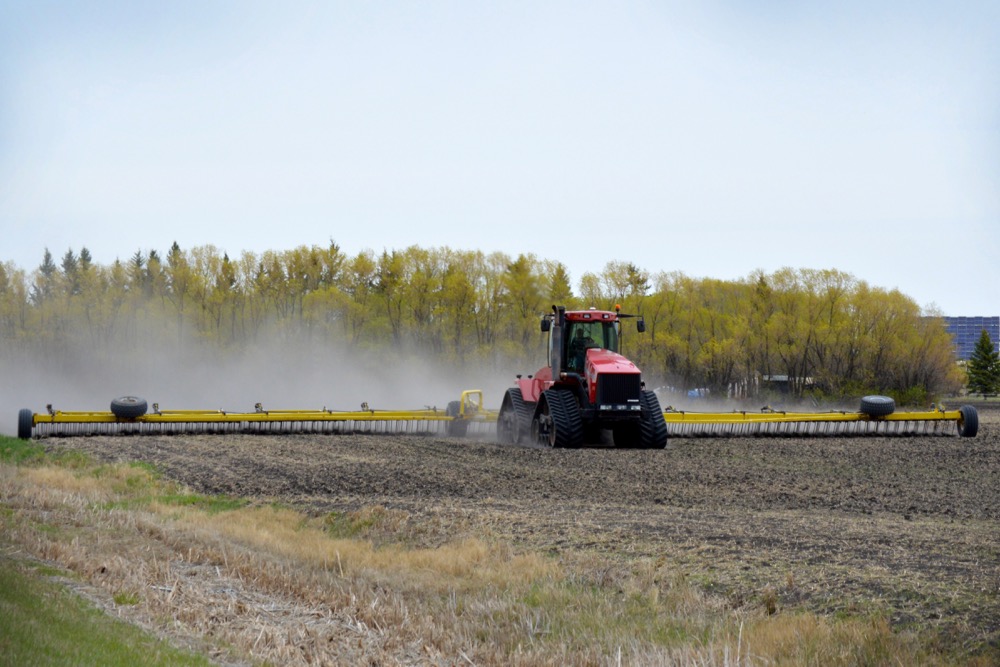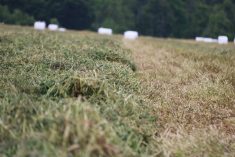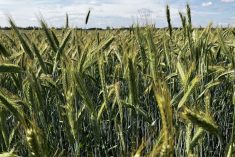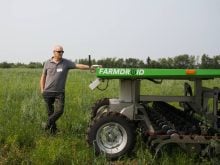After an early start, followed by weather delays, seeding progression is on par with average, according to Manitoba Agriculture.
“Last Saturday I got burned by the weatherman,” said Morris-area farmer Rolf Penner on May 14. He expected a storm, so he stayed parked. When rain barely materialized, he was left feeling behind schedule.
Still, Penner expected he’d finish seeding canola by the end of the day — he spoke to the Co-operator from his tractor cab — and figured he’d have his soybeans done in three or four days.
Read Also

VIDEO: Väderstad updates row units for Tempo planters
Väderstad brings its newly redesigned row units for its Tempo planter series to Agritechnica 2025.
“I’m not in a super big panic to get those done,” he said.
After a cool week, some cereals were still going in, reported Lionel Kaskiw of Manitoba Agriculture in a webinar on May 14. He said some farmers were seeding soybeans ahead of canola because of cool, dry soil conditions.
Why it matters: The success of the seeding season will help make or break the crop.
“I think the big scare there is that a lot of producers are concerned about flea beetle issues,” Kaskiw said. He said he’d seen canola being seeded in warmer conditions over the weekend.
Seeding progressing throughout Manitoba
In southwestern Manitoba, cereals were about 80 per cent planted by May 14 and early-seeded wheat was starting to emerge, according to Manitoba Agriculture. Pea seeding was complete and about to emerge. Soybeans were five to 10 per cent complete, but quick progress was expected.
Canola was about 25 per cent seeded, and corn was about half done. Winter wheat and fall rye were filling well, but needed rain.
In the northwest, seeding was progressing well with warmer temperatures, Manitoba Agriculture said. However, overnight temperatures continued to dip below zero. By May 14, seeding was about 40 per cent complete. Wheat was at 70 to 80 per cent done near Swan River, and about 85 per cent complete near Roblin.
Field peas and fababeans were almost completely in, but soybean planting had just begun. Winter cereals were greening up and appeared to have made it through the winter in good shape.
In the central region, scant rainfall meant the topsoil was starting to dry. Manitoba Agriculture said germination could be affected.
Cereals were about 90 per cent complete on May 14, and earlier-planted fields were starting to emerge. Corn was close to completion, and oilseed crops were the focus of the last week with canola seeding at about 30 to 40 per cent but expected to progress rapidly.
Potato planting in the Morden, Portage and Carberry areas was about 80 per cent complete. Peas were about done, and soybeans were at about 30 per cent completion.
In the eastern end of the province, producers made good progress over the last week. As of May 14, seeding was at about 50 to 60 per cent. Spring wheat was nearly all in and beginning to emerge. Corn was 55 to 75 per cent complete and expected to wrap up by the end of the week.
Canola was progressing rapidly, as was soybeans.
In the Interlake, overnight lows were still often falling below freezing, and producers were concerned with lack of rainfall in the region. Seeded acres sat at between 40 to 60 per cent complete. Most cereals were in, and peas and fababeans were complete.
Canola was estimated to be at 20 to 30 per cent done, soybeans at 10 to 25 per cent, and corn at 10 to 40 per cent.
Forage and pasture land looking poor
Dry conditions persist across the province, with rainfall remaining between zero and 28 per cent of normal, according to Manitoba Agriculture stats.
In general, pasture conditions are fair to poor, especially in the Interlake, said Tom Teichroeb, president of Manitoba Beef Producers.
The Alonsa area is “very, very dry,” Teichroeb said.
He said perennial forages and feed acres were only greening a little because of lack of moisture.
Manitoba Agriculture reported that rain is needed in nearly all of agro-Manitoba for successful crops and forages.
Drier conditions have had an impact on water reserves, said Teichroeb. Surface water wasn’t moving much with this year’s slow melt.
“We certainly need to be careful with herding cattle into pasture too soon,” he said, adding this was a double-edged sword, since forages are also depleted after a dry year.
“It’s just really become a huge challenge for us,” said Teichroeb.
Pests on the rise
Striped flea beetles have been popping up in traps, said Manitoba Ag entomologist John Gavloski. He said there wasn’t enough canola in the ground to know how beetle numbers compared to last year.
Cool temperatures mean slower canola germination and a greater chance of seed treatments wearing off, allowing beetles to get to them. However, Gavloski said the cool temperatures mean flea beetles are not feeding as aggressively.
Gavloski also advised to keep an eye out for cutworms. He said the odd cutworm has been spotted but not anything on a large scale.
After overwintering as partially grown larvae, dingy cutworms are quite large now and will be out feeding overnight. Gavloski said if producers see unexpected chunks of defoliated plants, they should dig around in the soil and see if they find cutworms.
Gavloski also warned that with a couple of hot, dry years, grasshopper populations are on the rise. The pests will begin hatching in early June. Gavloski suggests keeping an eye on their numbers on field edges.
Near Morris, Penner hopes for “a nice, two-inch soaker” of slow rain once he’s done seeding. Chinese-Canadian trade relations and a lack of moisture are what have him worried this year.
Penner said he wasn’t able to move much of his grain over the winter. He said he spent most of his time just blowing snow. Once it was warmer, he was able to sell it all at once. The price wasn’t quite what he wanted, but as he watches other farmers struggling to unload remaining crops, he said he expects this was the right move.
















